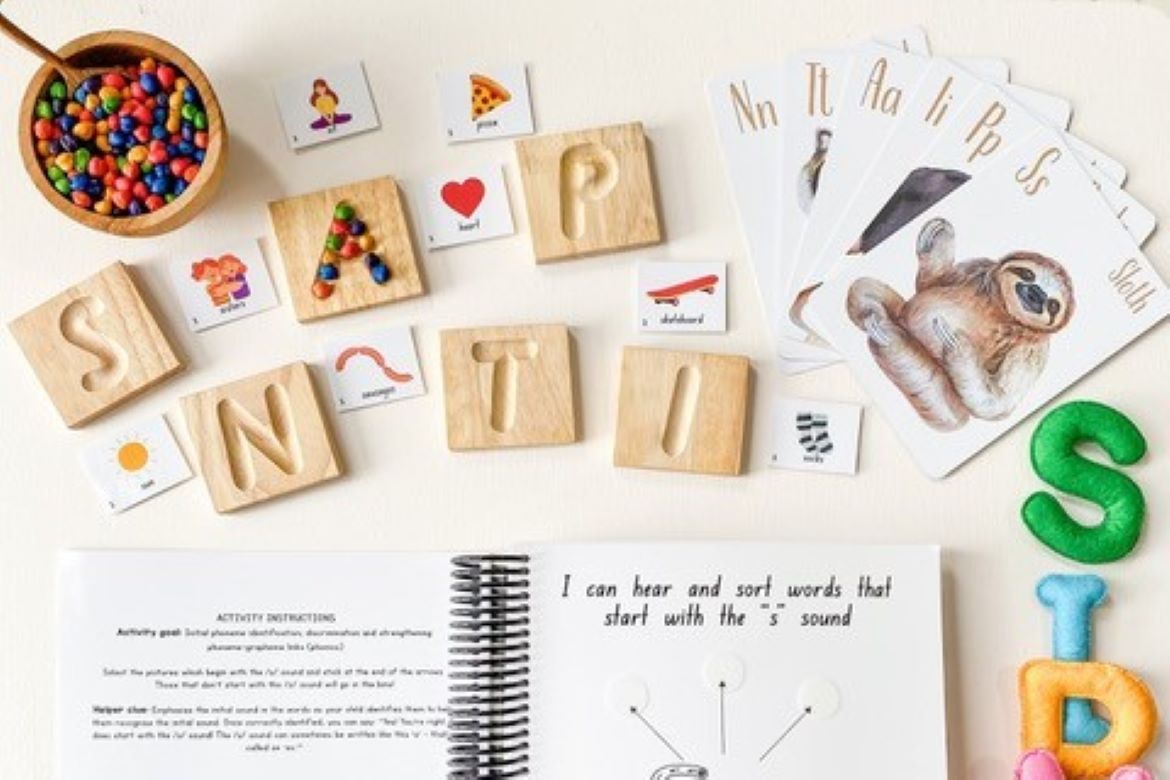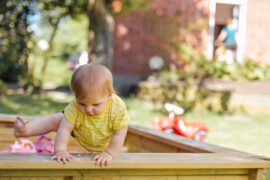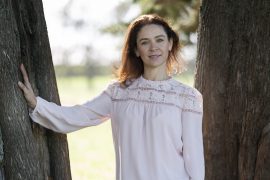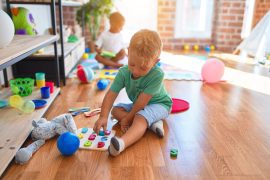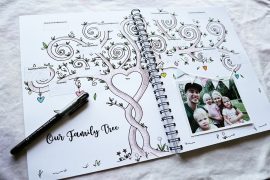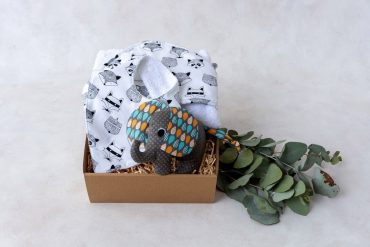By Angie Haywood
It is not breaking news that children are the most magnificent and unique individuals that bring an immeasurable richness in learning with the way they observe and interpret the world. They hold a magic that only children can, sparking a mixture of nostalgia, wonder, honesty, innocence, wisdom and freedom in those around them, purely from being unapologetically themselves. Some say it is the intertwined complexities of their developing minds, bodies and personalities, collective influence on their cognitive, social, emotional, and physical development and vice versa, underpinning the child’s individuality and growth that creates this magic and beauty we see in each child.
If we examine these intricacies further, starting with the speed neural connections form in a child’s brain within the first five years of life is five times faster than thereafter. That equates to over a million connections, interpreting and processing constant information and stimulation, simultaneously as they progress through the natural evolution of early developmental stages as they grow. Children’s minds are absolute powerhouses, right?! Together the interwoven systems of a child’s cognitive, social, emotional, physical and language developmental areas, as well as genetics, external stimuli and the five age developmental stages, combine seamless interrelationships that work in synchronised systematic chaos, creating their internal rhythm of personality and identity.
While there is a baseline of natural progression in growth and developmental milestones, with these endless variables in predisposing, protective, external and internal interrelationship influences, it means that children’s development progresses and presents differently for every individual. In turn, this results in a child’s learning to not always be predictable and linear. Although this provides endless possibilities of how that could look, the natural progression of development for each individual can be paired perfectly with supporting systematic learning processes as they are driven with the focus of meeting each child where they are at developmentally. Children also take comfort in chronological systems and patterns as they support learning by facilitating feelings of safety and security, which increases confidence through predictability and skill building through repetition and familiarity. When these systems are presented and offered in flexible play-based approaches attuned to a child’s individual needs, interests and developmental milestones, we see the holistic progression of early years development within each individual.
Children also take comfort in chronological systems and patterns as they support learning by facilitating feelings of safety and security, which increases confidence through predictability and skill building through repetition and familiarity.
For example, if we were to look at early literacy, there are identifiable patterns within the process of learning phonological awareness, combined letters, texts and even sounds. These patterns of phonological awareness encompass the natural progression of language and skills children require for reading and writing in a series of sequential steps. They can be broken down into smaller steps making them easier for children to understand, to then build on. The absolute beauty surrounding the stages of the phonological umbrella is because the patterns and steps can be broken down, they are accommodating and can be implemented in endless ways. Whether it occurs through everyday routines, interactions, conversations and of course through play, the only limitations are your creativity in presenting the learning. We know that children absorb everything, learning and interpreting everything around them every second they are awake. Hearing sounds, seeing words and letters, speaking sounds/words. Combined with being tactile learners, incorporating initial sound identification through play is a powerful mixture in utilising all the ways children absorb new information: touch, investigating, movement, experimenting to name a few.
Not only do the patterns in letters, words and sounds support early literacy, patterns assist the brain in moving ideas and concepts from working memory into long-term memory and support the shift of a child’s thinking from concrete to abstract, which also enables children to understand concepts easier. Have you ever noticed children singing the alphabet (sometimes on repeat), verbalising letters they observe in their environment or running their fingers over the words on the pages in their books? These identified patterns can all be signs a child is progressing to the stage of enquiry, engagement and learning of initial sounds and building their early literacy skills. For us, signs have been becoming present within conversations, observing Charlie (4years) slow down on words as he is pronouncing them, repeating sounds in words, and acknowledging letters he sees around him. I’ve begun hearing sentences being sung around the house; “H H Mumma”, “K K Igloo”, “S S Snake”, and while Charlie is doing absolutely amazing at showing and expressing his interest in words and their sounds, these observations tell me this is the perfect time to explore and extend on his interest and current knowledge.
To begin engaging his interest in initial sounds, I initiated a conversation with Charlie as I was setting up an activity next to his play, his Now we’re Reading Busy Book by Busy Books Australia: “What is your favourite sound that letters make?” with us taking turns to share our thoughts. It wasn’t long before Charlie came over, curious, and enquired about what I had set on the table. I read the page heading followed by asking Charlie if he was able to find the tabs starting with the letter ‘S’. As he chose each tab, it allowed the systematic approach (repetition) and space to explore the picture, take his time to observe the picture, sound the name and initial letter and conclude his findings. As he would pick up a tab, I would ask, “Charlie what can you see on the tab?” to encourage the connection between his visual information processing to verbal recall and sound delivery.
Without limitations is where we can truly observe a child’s developmental milestones as it encourages their mind to be curious and in the present moment, free from any pressure to “get it right”.
The moments where he selected the incorrect tab quickly became a child-led game, where he would repeat the name of the item, sounding out the word using the incorrect initial letter, creating funny new words. Using this flexible play approach to provide him tactile hands-on learning of the systematic steps of phonological awareness allows it to be explored with only the limitations of his imagination. Without limitations is where we can truly observe a child’s developmental milestones as it encourages their mind to be curious and in the present moment, free from any pressure to “get it right”.
The natural progression of Charlie’s learning within the activity, combined with play, supplemented his learning by hypothesising, information processing through repetition of sounding out initial sounds and allowed Charlie to extend on his knowledge through his own inquisitiveness as he felt safe and secure to be able to do so. This turned out to be an activity that brought lots of unexpected laughs, where we also got to be a bit silly and was beautiful for some one-on-one connection time (cue social and emotional learning).
Resources: Busy Books Australia: Now we are Reading book: pages 1-2 (I only used the first two pages to not overwhelm him), coloured chickpeas, bowl, spoon, wooden tracing letters – SATPIN, SATPIN Alphabet cards, SATPIN felt letters. I used the collection of these resources so he had options and could control and lead his play by being able to choose what he felt drawn to.
Steps: Grab your Now we are Reading Busy Book page 1-2.
Add a dry sensory base to a bowl (big enough to be able to pick up – we used chick peas). I paired the sensory base with tracing letters – SATPIN, so he could use the base to fill the letters. I then added felt SATPIN letters and alphabet cards for the purpose of Charlie to be able to explore the letters presented in a range of ways. Place the Busy Book tabs amongst the resources on the table. As a collective, the resources can be used to complete the activity on the pages, and encourage extensions such as pairing/letter matching, comparing similarities and differences, and great for tactile learning.
Goals: For Charlie to increase his knowledge and awareness of initial sounds in CVC words and be able to identify and sound them. This activity supports the early years curriculum by linking to:
EYLF Outcome 5: Children are effective communicators
Principle: High expectations and equity
Practice: Intentional teaching/Learning through play
NQS: QA3: Physical environment
Standard 3.2 – The service environment is inclusive, promotes competence and supports exploration and play-based learning.

